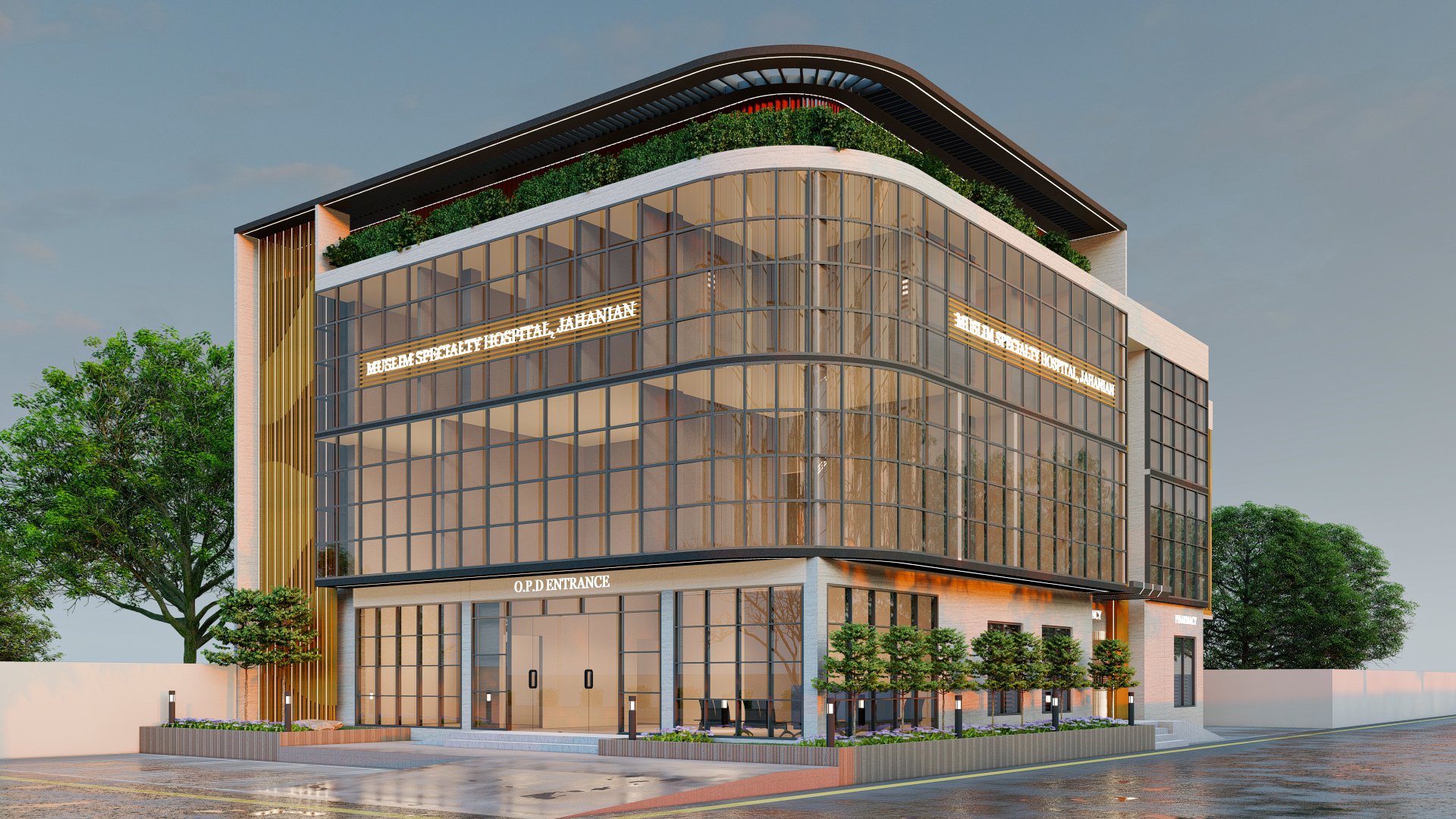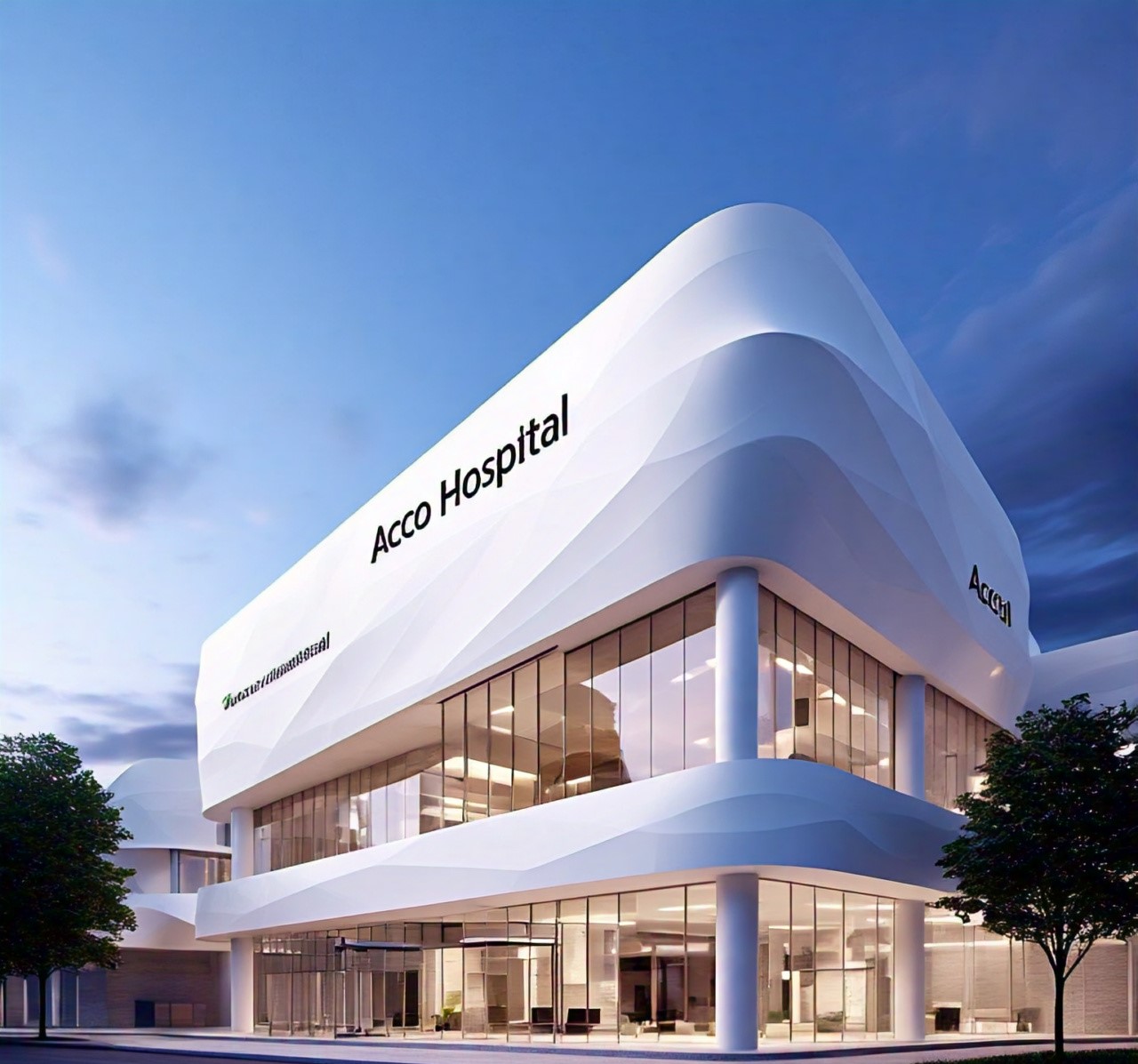
HOSPITAL DESIGN HUB Hospital Design in Pakistan: Balancing Aesthetics and Functionality
Balancing aesthetics and functionality in hospital design is crucial for creating environments that are not only visually appealing but also highly efficient and conducive to patient care. Here’s how to achieve this balance in hospital design in Pakistan:
1. Understanding the Role of Aesthetics and Functionality
Aesthetics:
- Positive Impact: Aesthetic design can reduce stress, promote healing, and enhance patient and staff satisfaction.
- Visual Comfort: Use colors, materials, and design elements that create a calming and welcoming atmosphere.
Functionality:
- Operational Efficiency: Ensure that the design supports efficient workflows, minimizes patient wait times, and facilitates effective care delivery.
- Safety and Accessibility: Prioritize safety and accessibility in the design to meet the needs of all users, including those with disabilities.
2. Design Principles for Balancing Aesthetics and Functionality
Entrance and Lobby:
- Aesthetic Appeal: Design an inviting entrance and lobby with natural light, comfortable seating, and calming decor.
- Functional Layout: Ensure clear signage, easy navigation, and efficient check-in processes to streamline patient flow.
Patient Rooms:
- Comfort and Privacy: Create private or semi-private rooms with comfortable furnishings and soothing color schemes. Incorporate elements like artwork and natural views to enhance the environment.
- Functional Design: Ensure rooms are equipped with necessary medical equipment, have ample space for caregivers, and support easy access to essential services.
Clinical Spaces:
- Efficient Layout: Design clinical areas such as examination rooms, operating theaters, and labs with a focus on operational efficiency and accessibility.
- Aesthetic Touches: Incorporate elements like natural light and calming colors to create a more pleasant environment for patients and staff.
3. Integrating Aesthetics and Functionality
Natural Light and Views:
- Health Benefits: Use natural light to improve mood and well-being. Design windows and skylights to provide views of outdoor spaces while maintaining privacy and security.
- Functional Design: Ensure that natural light sources do not interfere with medical procedures or cause glare on screens and surfaces.
Materials and Finishes:
- Durable Materials: Choose materials that are both aesthetically pleasing and durable, such as high-quality, easy-to-clean surfaces.
- Hygienic Considerations: Select materials that support infection control while maintaining a visually appealing design.
Wayfinding and Signage:
- Clarity and Functionality: Design clear, intuitive signage and wayfinding systems that guide patients and visitors easily through the facility.
- Aesthetic Integration: Incorporate signage into the overall design aesthetic, using colors and materials that complement the surrounding decor.
4. Creating Healing Environments
Biophilic Design:
- Nature Integration: Integrate elements of nature into the design, such as indoor gardens, water features, and natural materials, to enhance the healing environment.
- Functional Benefits: Ensure these elements do not impede functionality but rather contribute to a calming and restorative atmosphere.
Acoustic Design:
- Noise Reduction: Use acoustic treatments and design strategies to minimize noise and create a quieter environment, which can positively impact patient recovery and staff concentration.
- Aesthetic Integration: Incorporate acoustic solutions in a way that complements the overall design, such as using decorative panels and ceiling treatments.
5. Sustainable and Efficient Design
Energy Efficiency:
- Sustainable Choices: Implement energy-efficient lighting, HVAC systems, and renewable energy sources to reduce operational costs and environmental impact.
- Aesthetic Integration: Design these systems to blend seamlessly with the overall aesthetic of the hospital.
Water Conservation:
- Efficient Fixtures: Use water-saving fixtures and incorporate rainwater harvesting systems where feasible.
- Design Harmony: Ensure that these systems are integrated into the design in a way that supports both functionality and aesthetics.
6. Staff and Visitor Spaces
Comfort and Functionality:
- Break Rooms: Design staff break rooms and lounges to be comfortable and functional, providing a restful space for staff.
- Visitor Areas: Create welcoming waiting areas for visitors with comfortable seating, calming decor, and amenities such as refreshment stations.
Conclusion
Balancing aesthetics and functionality in hospital design in Pakistan requires a thoughtful approach that considers the needs of patients, staff, and visitors. By integrating natural elements, choosing durable and visually appealing materials, and ensuring that design enhances both operational efficiency and comfort, hospitals can create environments that support excellent care and promote well-being. This balance helps to foster a positive experience for all users while achieving the practical goals of the facility.
4o mini




